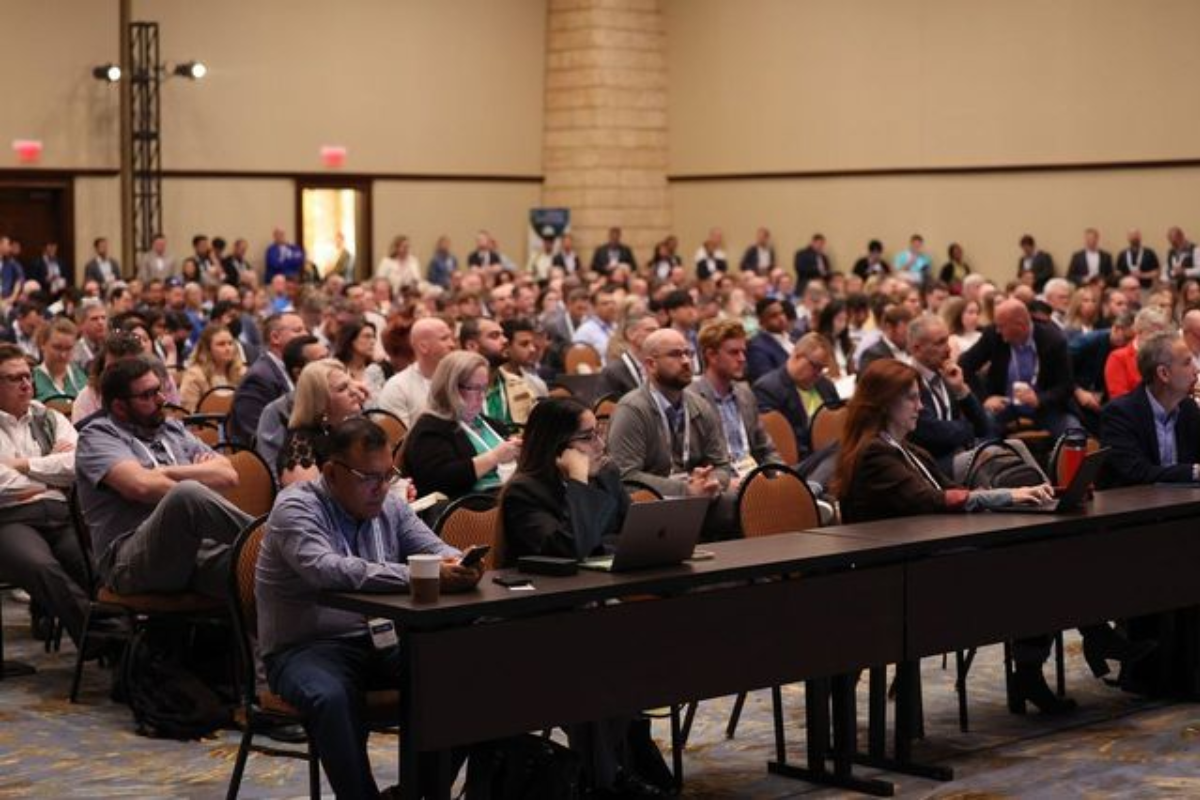
The first day of the annual Plastics Recycling Conference covered the state of the industry and the ways that recycling can improve with better packaging design and stakeholder collaboration. | Big Wave Productions/Resource Recycling
Plastic packaging could be designed for recycling from the start, rather than squeezed haphazardly into recycling systems after the fact, with greater collaboration and stakeholder involvement along the entire value chain, several speakers said Monday at the Plastics Recycling Conference in Grapevine, Texas.
“It’s the design that enables that process to begin,” said Scott Trenor, technical director at the Association of Plastic Recyclers, adding that manufacturers, reclaimers and others need to be able to trust each other along the way. “They have to know that it’s not going to screw something up for them, right? At the very least.”
APR owns Resource Recycling, Inc., which is the publisher of Plastics Recycling Update and organizer of the annual plastics conference, which runs through Wednesday. APR is also the creator of the Design Guide for Plastics Recyclability, which allows manufacturers to compare their products to recycling industry criteria.
Trenor spoke during the “Design for Recyclability: Harmonizing Across Continents” session. And as he and other panelists made clear, reconciling the needs of manufacturers and reclaimers is difficult and complicated even on a single continent.
“You’ve got to have a package that performs at the end of the day,” said Debra Wilson, material science director for Indiana-based manufacturer Berry Global. Bottle makers know how to make the bottle and the cap out of the same PET resin, for example, but making that cap to the needed specifications is a long way off.
Melissa Craig, associate director of circularity at The Clorox Company, noted Clorox needs triggers and other pieces typically too small for recycling, creating a dilemma for the company.
“Do you make it bigger, use extra plastic, to make it more recyclable?” Craig asked.
On the other hand, reclamation companies have their requirements, too, and regulations like the European Union’s Green Deal are closing in. The EU earlier this month reached a deal to ban single-use, non-recyclable plastic over the next decade.
“The Green Deal is really a transformation of European society,” said Fabrizio Di Gregorio, technical director of Plastics Recyclers Europe, which has partnered with APR to advance recyclability design on both sides of the Atlantic.
That kind of partnership and collaboration is key, Di Gregorio said, and can take many forms, such as sharing testing data and making sure not to replicate such efforts unnecessarily. Likewise, manufacturers, MRFs, local recycling programs and others can be clear with each other about their needs and capabilities and start to create products that everyone can handle appropriately.
“That’s how we’re going to have those positive changes in the market,” said Stacey Luddy, chief operating officer at Stina, a longtime recycling consulting firm.
Such an effort has worked before, Trenor said. Over just the past few years, nearly all toothpaste tubes have been declared recyclable by APR, though lawsuits claiming this is misleading continue.
“The entire format, all the supply chain, moved to create a package that’s compatible with our recycling stream,” he said. “I think that’s really exciting.”